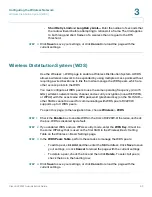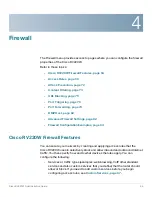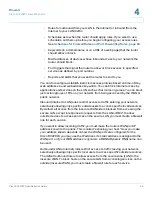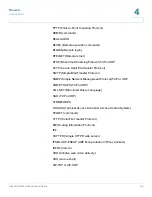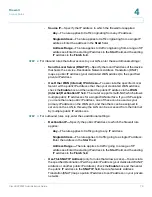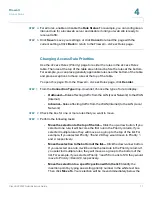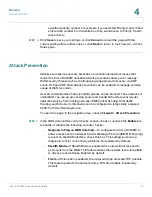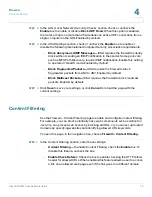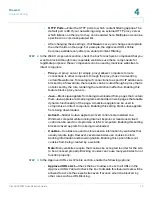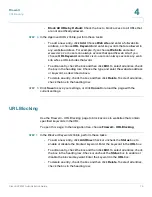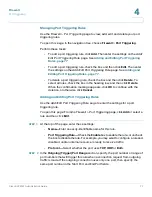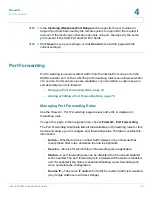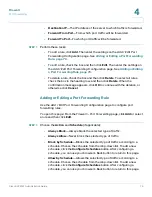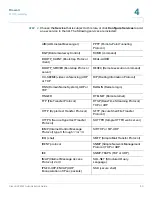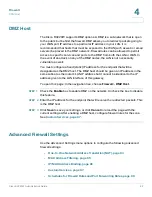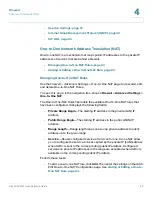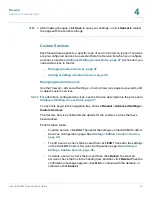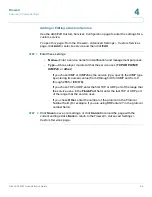
Firewall
Port Triggering
Cisco RV220W Administration Guide
76
4
STEP 2
Click
Save
to save your settings, or click
Cancel
to reload the page with the
current settings.
Port Triggering
Port triggering allows devices on the LAN to receive inbound traffic from the
Internet. Port triggering waits for an outbound request from the LAN on one of the
defined outgoing ports, and then opens an incoming port for that specified type of
traffic. Port triggering is a form of dynamic port forwarding while an application is
transmitting data over the opened outgoing or incoming ports.
Port triggering opens an incoming port for a specific type of traffic on a defined
outgoing port.
Port triggering is more flexible than static port forwarding (available when
configuring firewall rules) because a rule does not have to reference a specific
LAN IP or IP range. Ports are also not left open when not in use, thereby providing
a level of security that port forwarding does not offer.
NOTE
Port triggering is not appropriate for servers on the LAN, since there is a
dependency on the LAN device making an outgoing connection before incoming
ports are opened.
Some applications require that, when external devices connect to them, they
receive data on a specific port or range of ports in order to function properly. The
router must send all incoming data for that application only on the required port or
range of ports. The gateway has a list of common applications and games with
corresponding outbound and inbound ports to open. You can also specify a port
triggering rule by defining the type of traffic (TCP or UDP) and the range of
incoming and outgoing ports to open when enabled.
•
Managing Port Triggering Rules, page 77
•
Adding and Editing Port Triggering Rules, page 77


